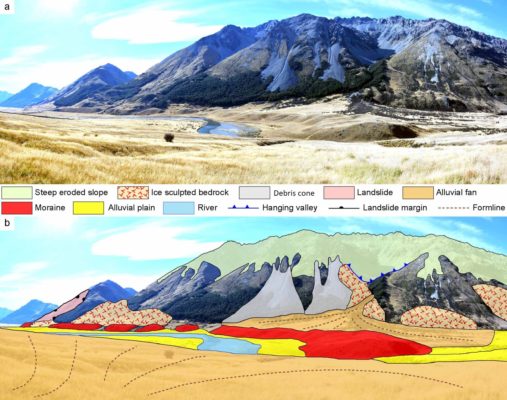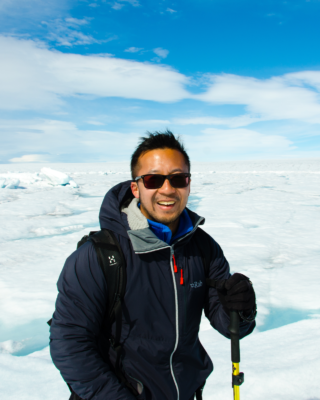Every two years, the Cryospheric Sciences division of the European Geophysical Union (EGU) elects a new representative for its early-career scientists. Starting in April 2021, Tun Jan (TJ) Young will take over the role from Jenny Turton, who is the outgoing representative. TJ shares a bit about himself and how his previous leadership experience aligns with the goals of EGU’s early career scientist ...[Read More]
Cryo tips to make the most of vEGU21
Similar to last year, this year’s annual general assembly is fully virtual. But unlike last year, the in-person experience is back! There are short courses, networking events and a website which looks just like the real Vienna Conference Centre. So go and buy yourself a Viennese Sachertorte, brew a batch of coffee and take 5 minutes to look at our top recommendations for vEGU21. vEGU21 – wha ...[Read More]
On snowmelt, water security, and a warming climate – Why solution-oriented research matters, now more than ever
1 April 2015: for the first time on record, the chief of the California Cooperative Snow Surveys, Frank Gehrke, had no snow to measure at the Phillips Snow Course near Lake Tahoe at the end of the winter. This was in some ways unsurprising, as California had been in a drought since 2012. But drought was nothing new in the state, and this was the first time on record that snow was completely absent ...[Read More]
The new glacial geomorphological map from New Zealand

Geomorphological maps are a fundamental tool to represent landforms and understand how different morphological elements and agents shaped a natural landscape. They are also important as background information for many fields of research including ecology, forestry and of course, glaciology. In this week’s blog, Levan Tielidze tells us about the importance of mapping glacial geomorphology, presenti ...[Read More]
Do meditation and a better science correlate? – Mindfulness in Academia
We often start searching for the term “mental health” online only when mental issues are already arising. It seems to be a trendy word on everyone’s social media. Of course, you don’t have to suffer already in order to learn about, and benefit from, mindfulness – or the ability to notice the present moment and what is going on in your life. In this post, I am sharing how I became a more mindful sc ...[Read More]
Climate Change and Cryosphere – What can we learn from the smallest, most vulnerable glaciers in the Ötztal Alps?
The Alps were the first mountains to be studied from a glaciological point of view in the 19th century and they host some of the most studied glaciers of Earth. Some of them are found in the Central Alps and in particular, the Ötztal Alps. Just to cite the most known and largest glaciers in this Alpine sector, we can mention Hintereisferner or Vernagtferner. But in the Ötztal Alps you can also fin ...[Read More]
Do you know about OGGM-Edu? An open-source educational platform about glaciers and glacier modelling
Are you teaching about glaciers and looking for fun educational activities for your students? Are you planning a workshop about glacier modelling and want to make it interactive, with a low entry level? Are you interested in learning about glaciers and glacier modelling, and looking for a simple way to get started? On top of that, do you want to do all of the above without installing anything on y ...[Read More]
Did you know that glacier mass loss affects water resources?
The picture above shows a typical Kyrgyz summer yurt camp, located in the valley of Altyn-Arashan, Kyrgyzstan. The stream you see flowing through comes from the glacier-fed lake of Ala-Kul, the gorgeous turquoise water featured below. The families who live there during summer have done so for generations, and travel up with their herds of horses and cows. The stream provides the water they need fo ...[Read More]
Image of the Week – The mystery of the ice mushrooms
Last week, the EGU Cryosphere Blog (“Cryoblog” for the regulars) team was contacted by a reader who stumbled upon very curious ice formations while taking a morning walk in rural Berkshire, England. This was right after a few nights with below-freezing temperatures and snowfall. He asked us whether we could explain to him what these ice mushrooms were and how they formed. Very curious and always k ...[Read More]
Subglacial Hydrology For Dummies – Water, water everywhere…
Glaciers are mostly made of water. Sometimes, perhaps more than we’d like, some of that water makes a break for it by melting, the inconstant molecule… It might pootle around on the surface of the glacier a bit and get a lot of remote sensers very excited, but it’s what it does once it gets to the base of the glacier that really matters for the behaviour and flow of the ice. So, in 2000 word ...[Read More]

